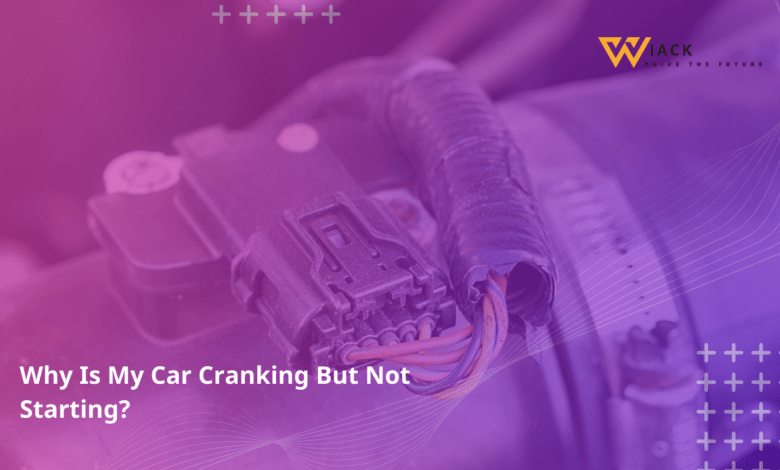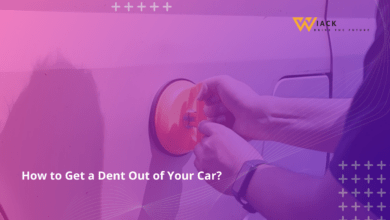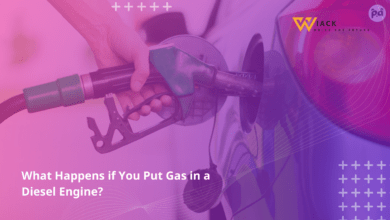Why Is My Car Cranking But Not Starting?

Did you know that according to a recent survey, over 65% of drivers have experienced their car cranking but not starting at least once in their lifetime? This surprising statistic highlights just how common this frustrating issue can be for vehicle owners. Whether you’re running late for work or stuck in an unfamiliar place, a car start failure can quickly turn your day upside down. In this comprehensive guide, we’ll explore the various reasons behind this problem and provide you with practical solutions to get your car back on the road.
Common Causes
When your car won’t start, there are several potential culprits to consider. Let’s dive into the most frequent reasons for engine cranking issues and what they mean for your vehicle.
Spark Plug Issues
Spark plugs play a crucial role in your car’s ignition system. They create the spark that ignites the fuel in your engine’s cylinders, allowing your car to start and run. When spark plugs fail, you may experience:
- Engine won’t start despite cranking
- Rough idling or misfiring when the engine does run
- Decreased fuel efficiency
Spark plug problems can occur due to:
- Normal wear and tear over time
- Carbon buildup on the electrodes
- Improper gap between electrodes
- Physical damage to the spark plug
To address spark plug issues, you may need to:
- Inspect the spark plugs visually for signs of wear or damage
- Clean the spark plugs if they’re fouled with carbon deposits
- Adjust the gap between electrodes if necessary
- Replace the spark plugs if they’re beyond repair
Regular maintenance, including spark plug replacement at recommended intervals, can help prevent these issues from occurring.
Fuel Flow Problems
Another common reason for a car cranking but not starting is a problem with the fuel system. If your engine isn’t receiving the proper amount of fuel, it won’t be able to start or run correctly. Fuel flow problems can manifest as:
- Car engine cranks but no start
- Engine starts but stalls immediately
- Sputtering or hesitation during acceleration
Potential causes of fuel flow problems include:
- Empty fuel tank (yes, it happens more often than you might think!)
- Clogged fuel filter
- Faulty fuel pressure regulator
- Leaking fuel lines
To troubleshoot fuel flow issues:
- Check your fuel gauge to ensure you have gas in the tank
- Listen for the fuel pump sound when you turn the key to the “on” position
- Inspect fuel lines for visible leaks or damage
- Consider having a professional check your fuel pressure and system components
Regular fuel system maintenance, including timely fuel filter replacements, can help prevent many of these issues.
Low Engine Compression
Engine compression is essential for your car to start and run properly. When compression is low, your engine may crank but fail to start. Signs of low compression include:
- Car cranking but not starting
- Difficulty starting, especially when the engine is cold
- Loss of power or poor acceleration
Low compression can be caused by:
- Worn piston rings
- Damaged valves or valve seats
- Blown head gasket
- Cracked engine block or cylinder head
Diagnosing low compression typically requires specialized tools and expertise. If you suspect this issue:
- Have a compression test performed by a qualified mechanic
- Prepare for potentially significant repairs, as low compression often indicates serious engine problems
Regular oil changes and proper engine maintenance can help prevent some causes of low compression.
Power Supply Malfunctions
Your car’s electrical system is crucial for starting and running the engine. Power supply issues can lead to a variety of starting problems, including:
- Car won’t turn over or crank at all
- Clicking sound when trying to start the car
- Dim or flickering dashboard lights
Common power supply problems include:
- Weak or dead battery
- Corroded or loose battery terminals
- Faulty alternator
- Damaged starter motor
To address power supply issues:
- Check battery voltage with a multimeter
- Inspect battery terminals for corrosion or loose connections
- Have your alternator tested to ensure it’s charging the battery properly
- Listen for unusual sounds when trying to start the car, which could indicate a starter motor problem
Regular battery maintenance and prompt replacement of worn components can help prevent many electrical issues.
Obstructed Fuel Injectors
Fuel injectors deliver precise amounts of fuel to your engine’s cylinders. When they become clogged or malfunction, it can lead to starting problems and poor engine performance. Signs of fuel injector issues include:
- Car ignition problems
- Rough idling or misfiring
- Poor fuel economy
- Failed emissions tests
Fuel injector problems can be caused by:
- Buildup of deposits from low-quality fuel
- Normal wear and tear over time
- Electrical issues affecting injector operation
To address fuel injector problems:
- Use a fuel injector cleaner additive in your gas tank
- Have a professional perform a fuel injector cleaning service
- Replace faulty fuel injectors if cleaning doesn’t resolve the issue
Using high-quality fuel and following recommended maintenance schedules can help prevent fuel injector problems.
Faulty Fuel Pump
The fuel pump is responsible for delivering fuel from your tank to the engine. When it fails, your car may crank but fail to start. Symptoms of a faulty fuel pump include:
- Engine cranking issues with no start
- Loss of power while driving
- Sputtering or stalling, especially at high speeds
Fuel pump failures can be caused by:
- Normal wear and tear over time
- Running the car with very low fuel levels frequently
- Contaminated fuel
To diagnose and address fuel pump issues:
- Listen for a humming sound from the rear of the car when the key is turned to the “on” position
- Check the fuel pressure using a fuel pressure gauge
- Inspect the fuel filter for clogs that could be straining the pump
- Replace the fuel pump if necessary
Keeping your fuel tank at least a quarter full and using quality fuel can help extend the life of your fuel pump.
Defective Crank Sensors
The crankshaft position sensor provides crucial information to your car’s computer about the engine’s position and speed. A faulty sensor can prevent your car from starting. Signs of a defective crank sensor include:
- Car cranking but not starting
- Engine stalling while driving
- Check engine light illuminated
Crank sensor problems can be caused by:
- Electrical issues or wiring damage
- Physical damage to the sensor
- Normal wear and tear
To address crank sensor issues:
- Use an OBD-II scanner to check for related error codes
- Visually inspect the sensor and its wiring for damage
- Test the sensor’s resistance with a multimeter
- Replace the sensor if it’s found to be faulty
Regular vehicle inspections can help catch sensor issues before they lead to starting problems.
Clogged Engine Air Intake
Your engine needs a proper balance of air and fuel to run correctly. A clogged air intake can disrupt this balance, leading to starting issues. Symptoms of a clogged air intake include:
- Difficulty starting the engine
- Reduced engine performance
- Decreased fuel efficiency
Air intake clogs can be caused by:
- Dirty or clogged air filter
- Debris blocking the air intake duct
- Malfunctioning mass airflow sensor
To address air intake issues:
- Inspect and replace the air filter if necessary
- Check the air intake duct for obstructions
- Clean or replace the mass airflow sensor if it’s dirty or faulty
Regular air filter replacements and inspections can prevent most air intake problems.
Starter Motor Connection Problems
The starter motor is responsible for turning your engine over when you turn the key. Loose or corroded connections can prevent it from working properly. Signs of starter motor connection problems include:
- Clicking sound when trying to start the car
- Car won’t turn over despite a good battery
- Intermittent starting issues
To address starter motor connection problems:
- Inspect the starter motor’s electrical connections for corrosion or looseness
- Clean any corroded connections with a wire brush
- Tighten any loose connections
- Replace damaged wiring if necessary
Regular inspections of your car’s electrical system can help catch these issues early.
Battery Issues
A weak or dead battery is one of the most common reasons for car start failure. While a completely dead battery usually results in no crank at all, a weak battery can sometimes provide enough power to crank the engine but not start it. Signs of battery problems include:
- Slow cranking
- Dim headlights or interior lights
- Electronic accessories not working properly
To address battery issues:
- Check the battery’s voltage with a multimeter
- Inspect battery terminals for corrosion or loose connections
- Attempt to jump-start the car if the battery is weak
- Replace the battery if it’s old or no longer holding a charge
Regular battery maintenance and timely replacement can prevent many starting issues.
Advanced Security System Malfunctions
Modern cars often have advanced security systems that can sometimes malfunction and prevent the car from starting. Signs of security system issues include:
- Car cranking but not starting
- Security light flashing on the dashboard
- Key fob not being recognized by the car
To troubleshoot security system problems:
- Check your owner’s manual for specific reset procedures
- Try using a spare key if available
- Disconnect the battery for a few minutes to reset the system
- Consult a dealer or specialist if the problem persists
Keeping your key fob battery fresh and handling your keys carefully can help prevent some security system issues.
Troubleshooting Steps
When faced with a car cranking but not starting situation, following a systematic troubleshooting process can help you identify and resolve the issue more quickly. Here are some steps you can take:
Check for Diagnostic Trouble Codes (DTCs)
Modern cars have onboard computers that can provide valuable information about potential issues. To check for DTCs:
- Locate your car’s OBD-II port (usually under the dashboard)
- Connect an OBD-II scanner to the port
- Turn the key to the “on” position without starting the engine
- Follow the scanner’s instructions to read any stored codes
Understanding these codes can give you a head start in diagnosing the problem. Many auto parts stores offer free code reading services if you don’t have your own scanner.
Inspect Fuses and Relays
Blown fuses or faulty relays can prevent various systems from working properly, leading to starting issues. To check fuses and relays:
- Locate your car’s fuse box (check your owner’s manual for the location)
- Remove and visually inspect fuses related to the ignition, fuel, and starting systems
- Replace any blown fuses with ones of the same amperage
- Inspect relays for signs of damage or corrosion
- Consider swapping suspect relays with identical ones to test functionality
Always consult your car’s manual to ensure you’re checking the correct fuses and relays.
Test the Ignition System
A faulty ignition system can prevent your car from starting. To test the ignition system:
- Remove a spark plug and reconnect it to its wire
- Ground the spark plug against a metal part of the engine
- Have someone crank the engine while you observe the spark plug
- Look for a strong, blue spark between the electrodes
If you don’t see a spark or it’s weak, there may be an issue with your ignition system that needs further investigation.
Verify Fuel Pressure
Proper fuel pressure is crucial for starting and running your engine. To check fuel pressure:
- Locate the fuel pressure test port on your fuel rail
- Connect a fuel pressure gauge to the test port
- Turn the key to the “on” position without starting the engine
- Observe the fuel pressure reading and compare it to specifications in your repair manual
Low fuel pressure can indicate issues with the fuel pump, fuel filter, or pressure regulator.
Assess Compression
Low compression can prevent your engine from starting. While a proper compression test requires special tools, you can perform a basic check:
- Remove all spark plugs
- Place your thumb over a spark plug hole
- Have someone crank the engine
- Feel for pressure pushing against your thumb
If you don’t feel strong, consistent pressure on all cylinders, you may have a compression issue that requires professional diagnosis.
Examine Battery and Charging System
A weak battery or faulty charging system can cause starting problems. To check your battery and charging system:
- Test battery voltage with a multimeter (should be around 12.6 volts when off)
- Check battery terminals for corrosion or loose connections
- Attempt to jump-start the car if the battery is weak
- If the car starts with a jump, have the alternator tested to ensure it’s charging properly
Regular battery maintenance and timely replacement of worn components can prevent many electrical issues.
Check for Air Leaks
Air leaks in the intake system can cause starting and running problems. To check for air leaks:
- Visually inspect all vacuum hoses for cracks or disconnections
- Listen for hissing sounds with the engine running, which can indicate a leak
- Use a smoke machine or spray soapy water on suspected leak areas to identify problems
Addressing air leaks can often resolve running issues and improve overall engine performance.
Inspect Starter Motor
A faulty starter motor can prevent your engine from cranking properly. To check the starter motor:
- Listen for clicking sounds when trying to start the car
- Inspect starter motor connections for corrosion or looseness
- Tap the starter motor gently with a hammer while someone tries to start the car (this can sometimes temporarily resolve issues with a stuck starter)
- If problems persist, have the starter motor tested or replaced by a professional
Regular inspections of your car’s electrical system can help catch starter issues early.
Evaluate Security System
Modern car security systems can sometimes malfunction and prevent starting. To troubleshoot security system issues:
- Check for a flashing security light on the dashboard
- Consult your owner’s manual for reset procedures
- Try using a spare key if available
- If problems persist, consult a dealer or specialist for advanced diagnostics
Keeping your key fob battery fresh and handling your keys carefully can help prevent some security system issues.
Additional Considerations
When troubleshooting car start failure, it’s important to consider various factors that might contribute to the problem. Here are some additional points to keep in mind:
Environmental Factors
The environment can play a significant role in your car’s starting behavior. Consider:
- Extreme temperatures (both hot and cold) can affect battery performance and fuel vaporization
- High humidity can lead to moisture in the electrical system
- Altitude changes can affect air-fuel mixture and engine performance
Be aware of how these factors might be influencing your car’s starting behavior and adjust your troubleshooting approach accordingly.
Vehicle Age and Mileage
As vehicles age and accumulate mileage, they become more prone to certain issues:
- Older cars may have worn components that are more likely to fail
- High-mileage vehicles often require more frequent maintenance and part replacements
- Newer cars with advanced technology may have different troubleshooting needs than older models
Consider your vehicle’s age and mileage when diagnosing starting problems and determining the most likely causes.
Recent Repairs or Maintenance
If you’ve recently had work done on your car, it’s worth considering whether this could be related to your starting issues:
- Incorrectly performed repairs might introduce new problems
- Recent part replacements could be faulty or incompatible
- Disturbing certain components during maintenance might lead to unintended consequences
If your starting problems began shortly after recent work on your car, it may be worth revisiting the repair or maintenance that was performed.
Consulting a Mechanic
While many starting issues can be diagnosed and resolved by car owners, some problems require professional expertise:
- Complex electrical issues often need specialized diagnostic equipment
- Engine internal problems may require extensive disassembly for proper diagnosis
- Some repairs may be too dangerous or complicated for DIY attempts
Don’t hesitate to consult a professional mechanic if you’re unsure about diagnosing or repairing your car’s starting problem. Auto repair shops and car troubleshooting experts have the tools and knowledge to tackle even the most challenging issues.
In conclusion, a car cranking but not starting can be caused by a wide range of issues, from simple problems like a dead battery to more complex issues involving the engine or electrical system. By understanding these common causes and following a systematic troubleshooting approach, you can often identify and resolve the problem quickly. Remember to prioritize safety and don’t hesitate to seek professional help when needed. With proper maintenance and timely attention to potential issues, you can help ensure your car starts reliably for years to come.
Get the latest car news, reviews, and prices at Wiack.com. Your one-stop destination for all things automotive.





